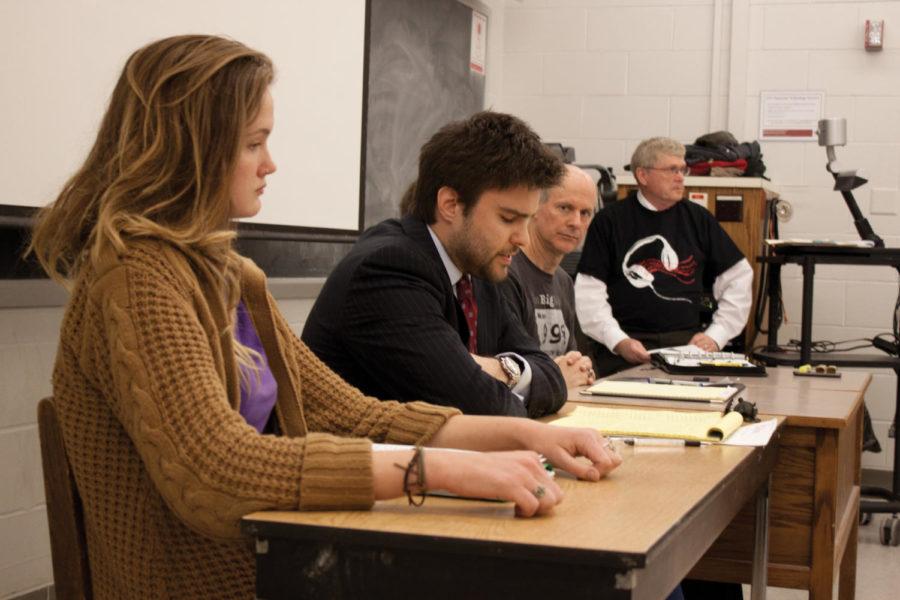Occupy 101: Learning the art of protest
April 12, 2012
“Take a frog, and if you throw that frog in hot water, it jumps out; if you throw him in cold water, he stays, and if you turn up the heat slowly, he dies a horrible froggy death,” said Ed Fallon, who served as a member of the Iowa General Assembly from 1993 to 2006. “And I feel that what’s happening to our First Amendment rights.”
Gilman Hall 1652 hosted four panelists who held a discussion entitled, “Occupy 101: a Beginners Guide to Protests” for Iowa State’s 10th anniversary celebration of First Amendment Day.
The panelists included Fallon; Ahna Kruzic, senior in sociology and women’s studies; Jonathan Peters, media lawyer; and Joseph Glazebrook, a founding partner of Glazebrook & Moe, LLP.
Kruzic has actively participated in the occupy movement protests, including spending a week and a half in New York to attend Occupy Wall Street.
In response to the importance of the right of assembly based on personal experiences with the Occupy ISU and Ames Movements, Kruzic said, “I think we need to be cognizant that [amendment restrictions] are happening, especially in a university where our funding from the government is getting lower and lower, so we rely on private funds, but does that affect what we are allowed to say?”
The bottom line with protest movements is you need to know your rights and responsibilities.
“Locally, the state of Iowa has curfews and restrictions on who can protest and when it happens, and you have to have a permit, but the Constitution has no such rules, except it must be peaceably,” Glazebrook said. “Some restrictions go beyond determining whether a protest is peaceful or not, and those restrictions come up against the first amendment, and that tension gets played out in the court.”
Peters added: “There is a difference between traditional public forums, which are historically noted protest areas; designated public forums, which are determined by police or practice used for protest; and non-public forums, which are publicly owned but not available for the use of expressive purposes.”
A take-home message was that rights are not absolute, which is portrayed in the fact that not all publicly owned land is available for freedom of expression.
Although each of the panelists shared different experiences, they all agreed that peaceful protesting is a good means of making a change.
“The Civil Rights Movement is a good comparison [to the Occupy Movement],” Glazebrook said. “They organized themselves — that was all arguably first amendment activity — and they made their thoughts known in a very dramatic way.”
“The art of protest was dying if not already dead,” Peters said. “But the Occupy Movement means we’re back in business.”







